

Harrie and Felixandre (AKA House of Harlix) are “Sims” custom content creators who met online and joined forces to make some of the most in-demand “Sims” mods online. Rather than mold themselves into the constraints of the modern world, they’ve designed a career to best suit their needs, not someone else’s. Liv Siddall speaks to the duo about how content creators like them can modify and elevate not just their Sims, but their lives.
Any “Sims” player (past or present) will recall their first few tries of the game: the thrill of initiating a maniacal, Richie Rich-style spending splurge courtesy of repeated entries into the cheat bar. Cue gargantuan swimming pools, sex dungeons, DJ booths, cheetah print carpets and gardens littered with eye-wateringly expensive sculptures. You’re creating a dream world, and you’re fully in control.

The fun soon wears off. The brilliance of “The Sims” is that you learn, swiftly, that doing whatever you want with a bottomless supply of cash is… actually quite dull. What you really want, what we all want, in the game and the real world, is not the life of a bored lottery winner, but a slightly elevated version of what we already possess.
House of Harlix twigged this early on in their collaboration. The pair—known only as Felixandre and Harrie—are expert “Sims” custom content creators who found one another online and teamed up to become a super-duo, locating and plugging a gap in the infinite possibilities of “Sims” design.
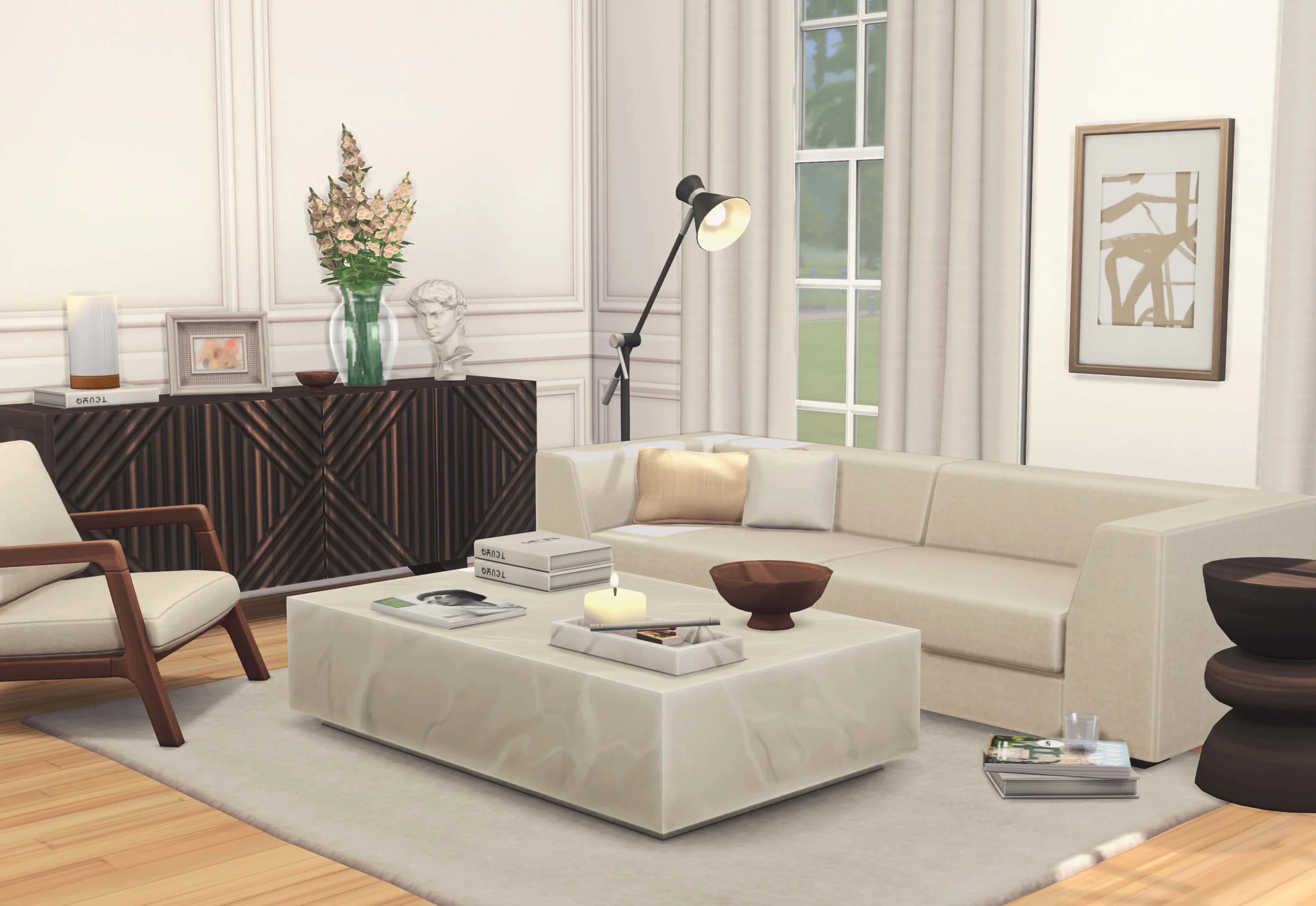
What we all want is not the life of a bored lottery winner, but a slightly elevated version of what we already possess.
Prior to meeting Felix, London-based Harrie had had her foot in the game (literally) for a while, getting into “Sims” builds when looking for a creative outlet while working for her dad after completing her graphic design degree. She started a YouTube channel, posting friendly, helpful videos in which she narrates walk-throughs of how to build opulent “Sims” dream houses. The deftness and dexterity of her speed builds, combined with her laid-back sensibility makes for a fascinating and ambient watch. The channel now has over 60,000 subscribers.
Meanwhile, Felixandre was living in Berlin working in the fashion industry. As a “Sims” player, he was frustrated by the limited architectural options available in the game and decided to make his own sets, inspired by the traditional fairytale castles of his native Germany. He then started selling them as mods for other “Sims” players online. Harrie saw his designs on Twitter, then started supporting him on Patreon. Felixandre watched some of Harrie’s videos, and the two began to talk. “I was streaming on Twitch and he joined in,” Harrie recalls. “I think after a year of becoming friends, and bugging him, he agreed to do a kitchen with me.”
While Felix was still more excited by creating fantasy castles, Harrie was obsessed with making kitchens: something that the game’s developers had not given a huge amount of thought to. “So many times, they gave us kitchens, and then the kitchen island didn't match the counters, and everything was not the right color, and it was a disaster,” Felix recalls. Harrie became aware of a huge demand for modern designs for “Sims” kitchens. Why shouldn’t she and Felix join forces, make them, and sell them?
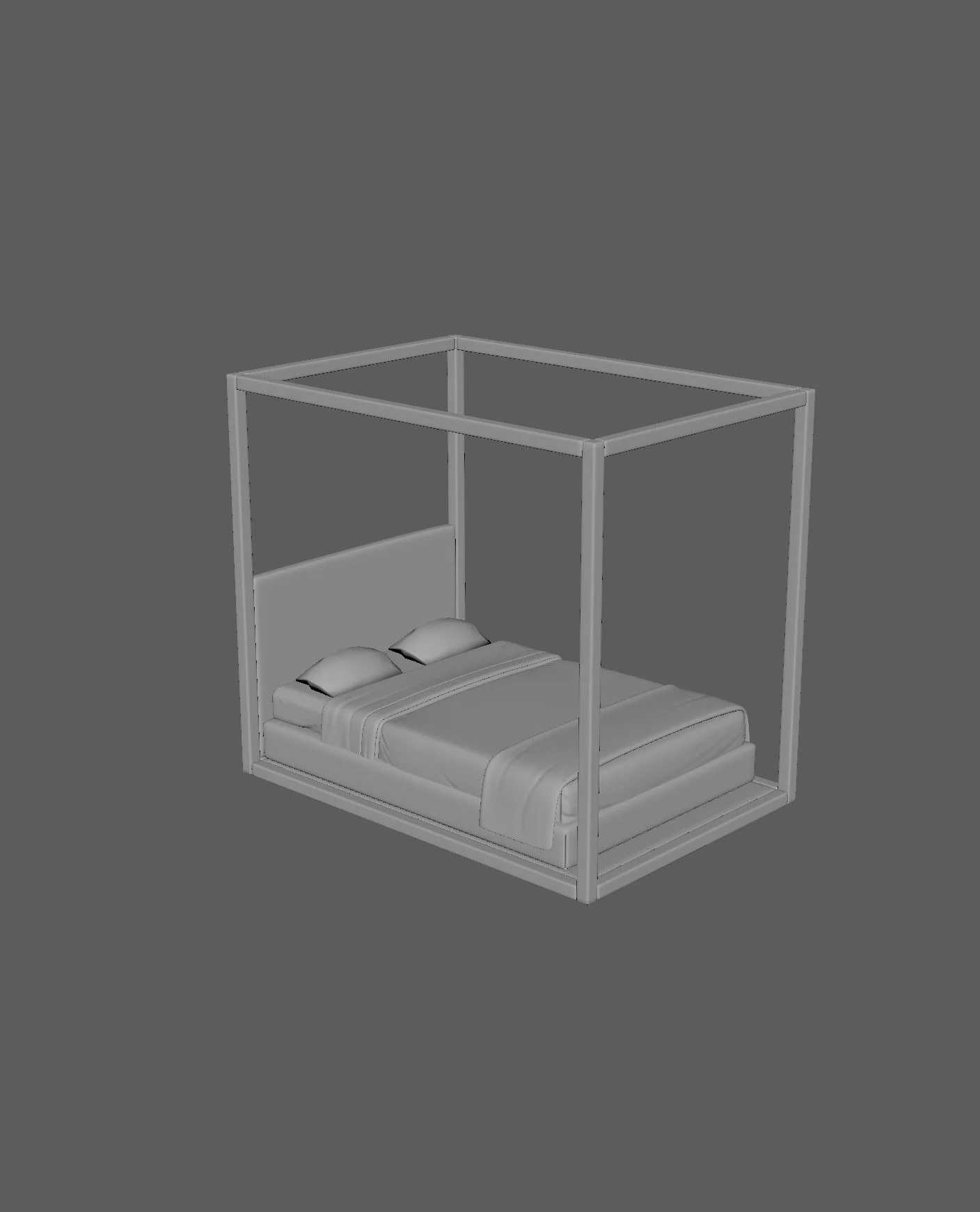
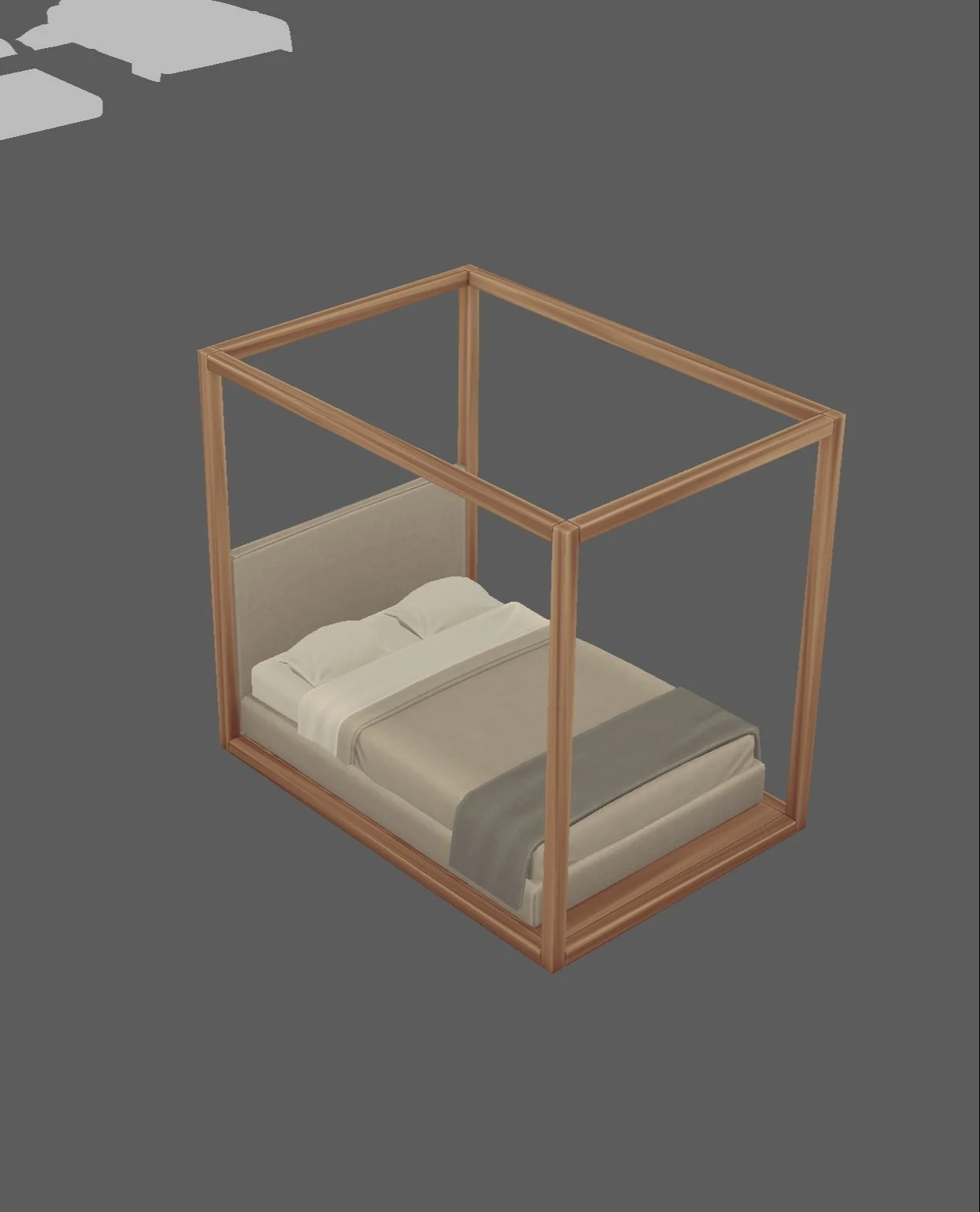
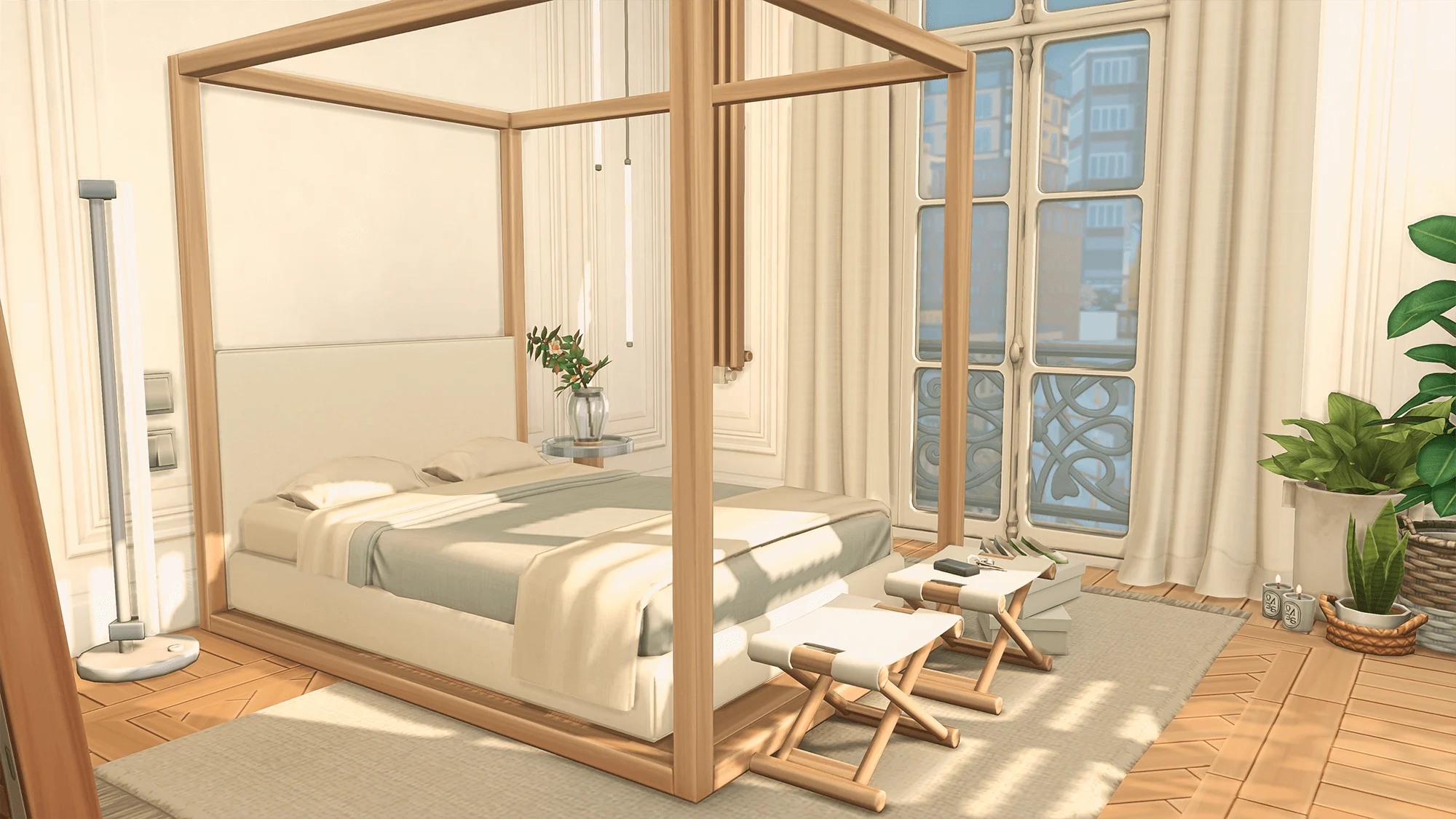
It may be worth explaining here that “The Sims” allows you to design within the (fairly infinite) constraints of what it supplies each player. While the game is not open source per se, it does actively encourage users to design and make new items externally which can then be downloaded and used within it. For example, if you want one of your Sims to have a specific Eames chair, you can design one using different software and then download it to use in your gameplay.
This rare act of openness from such a major franchise has proved to be a very wise decision. Now, there are tens of millions of “Sims” players online who can not only design their own outfits, interiors and architecture, but actually sell them to others. It’s made the “Sims” gaming community explode and, crucially, with new and exciting things being offered up so frequently by users, it’s magically enabled the game to never really get boring. Interestingly, the developers behind “The Sims” are currently working to create a dedicated program on mod platform CurseForge purely for “Sims” creators to meet, share ideas and house their free content. Through this, creators like Harrie and Felix can earn money from uploading their creations by getting a cut of the ad revenue as part of their reward system. Felix is excited about this. “People will find us more easily, and we will have more exposure,” he says. “It's just such an achievement that EA does this for us creators, it's really cool.”

The “sets” that creators like House of Harlix make are built using a “mesh,” essentially a digital 3D model. Felix creates highly detailed versions of these using an assortment of software programs. First Maya, then Blender, then Adobe Substance 3D. It’s a process he’s honed for years, and it takes a long time. The designs are inspired by whatever catches their eye, usually when scrolling around the internet. Harrie collects images together on Pinterest and the sets she builds with Felix come from that. “I made a set that's called ‘Brownstone,’ and it was from Athena Calderon's amazing Brownstone,” she says. “It's kind of like the inspiration, but it's not necessarily so specific. It's more a vibe that you’re trying to convey.”
To use Athena Calderon’s house as inspiration is interesting. It’s beautiful, but the aesthetic is not entirely unique and unattainable in a way that, say, a Ricardo Bofill building or something like Richard and Ruth Rogers’ house is. This goes back to the genius of House of Harlix’ creations. They’re making fantasy objects that are almost within reach. Not many people could conjure up a house like Frank Lloyd Wright, but most people with an infinite budget and three hours in Zara Home could probably come up with very attractive ideas for how to combine objects to make beautiful interiors.
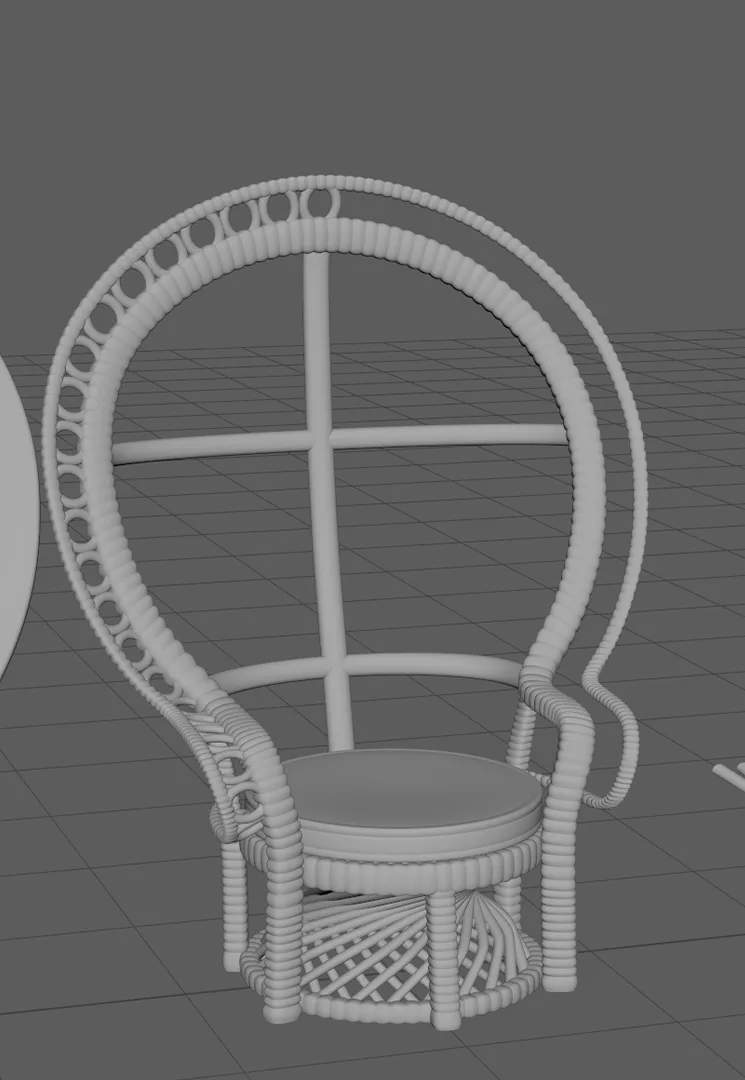
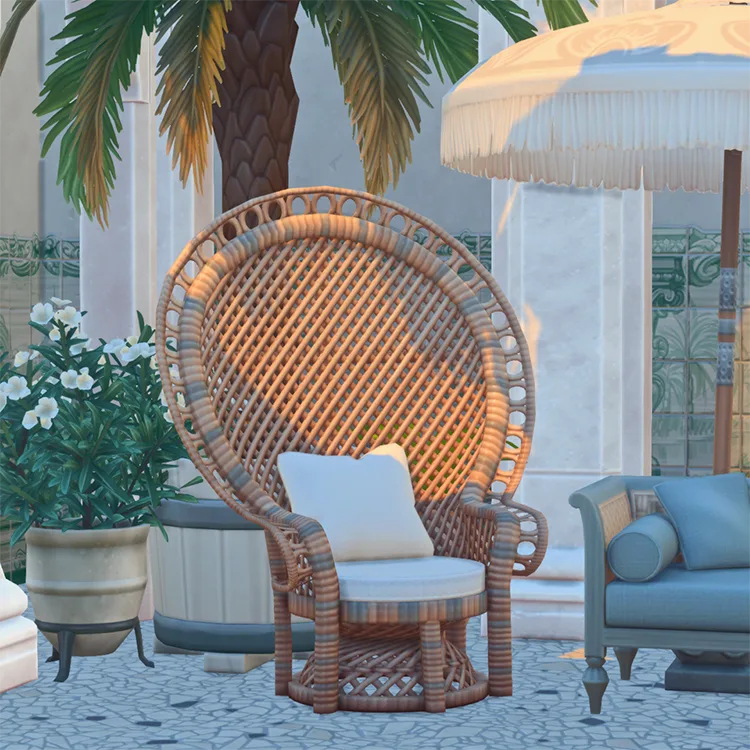
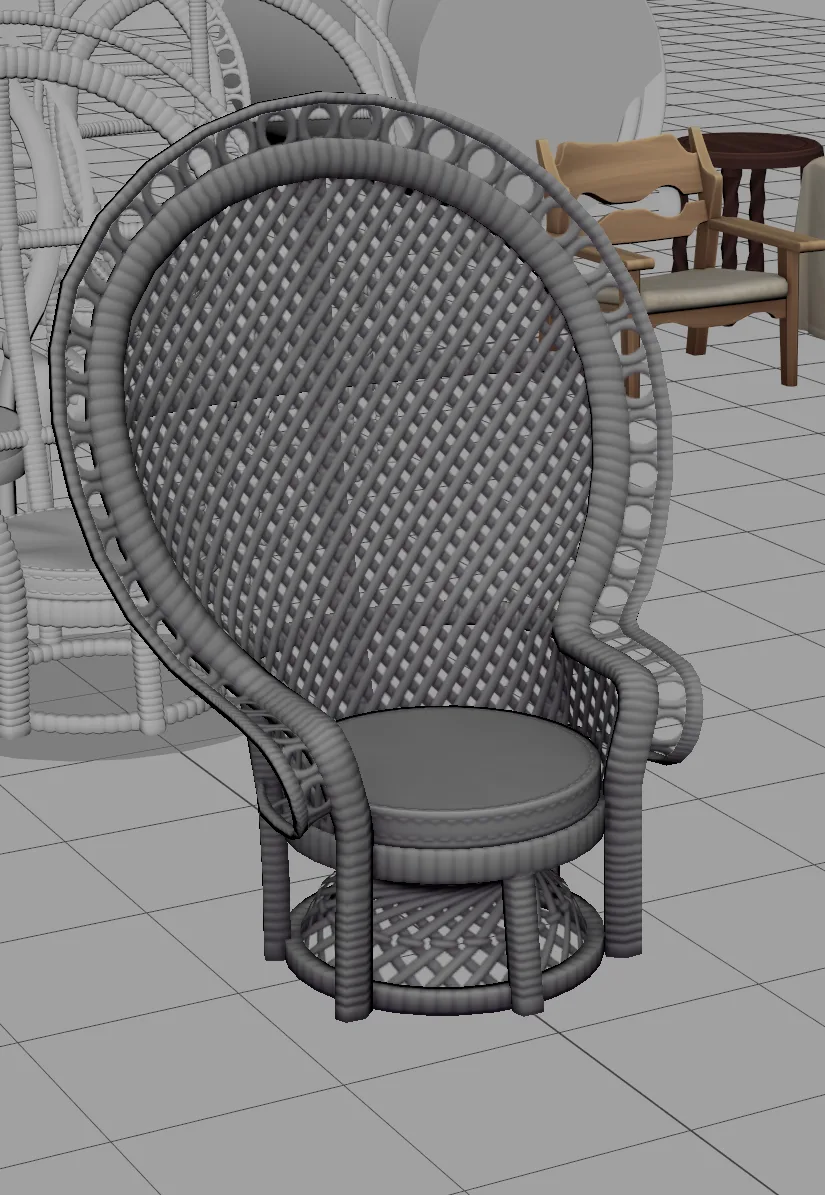
I was working for Givenchy before, and now I'm doing computer furniture.
In 2019, House of Harlix released their first collaboration: a set called “Kichen”. It skyrocketed, and hasn’t shown signs of slowing since. “That one is by far and above the most downloaded thing either of us have,” Harrie explains. “I feel like it just came at the perfect time.” Since then, they have worked tirelessly together to make new sets based on their own instincts and what their audience requests.
To get this done, Harrie travels to Berlin, to Felix’s studio where they hole themselves up together and create sets to release to the public, which are available on their site. “We push each other to strive for more when we are working together,” Harrie says. “When there's two of you you can't let the other person down, and you're both going for that final goal.”
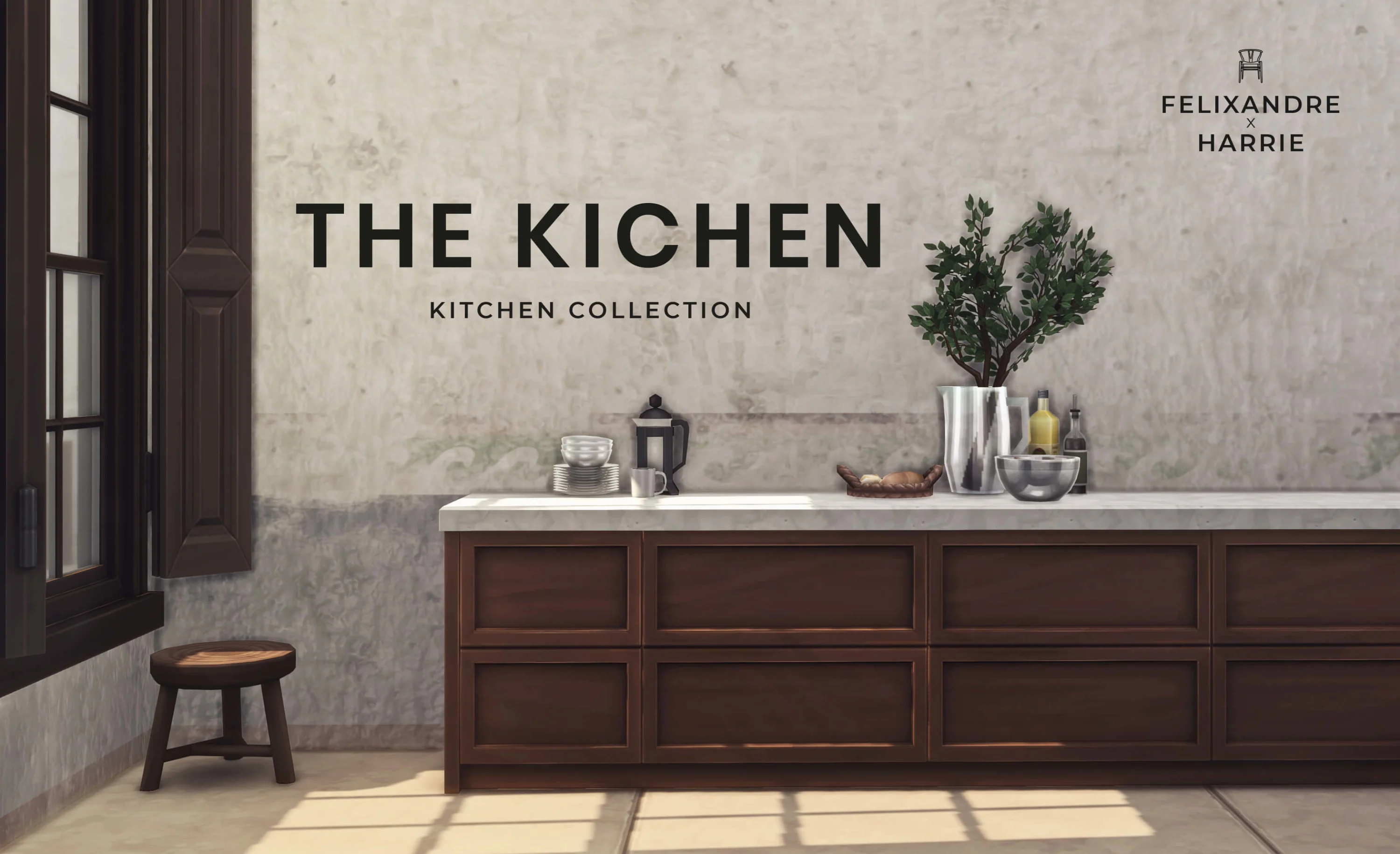
The pair decided that due to the nature of Patreon and EA, they’d have to start thinking hard about when and how they work together. EA encourages people to make “Sims” content and earn money from it, but with limitations. “EA's policy is that you can do a period of early access for your content,” says Harrie. “They updated their terms recently, but in general it's a reasonable amount of time you're allowed to have your items on early access, to recoup your costs and to earn money from it.”
That, combined with the fact Patreon pays out at the start of the month means that Felix and Harrie decided to forgo weekends full-stop to get a working system in place. Now, they have 10 days off, and 20 days on, in order to work together to push out the download drops to recoup the money in time for Patreon’s schedule. “We do one month early access on the content,” Harrie explains. “So it'll be on Patreon exclusively for one month, and then we'll put it on the website, and say Tumblr, or other places, for the rest of the time it's free. So the website's completely free, but Patreon has the most recent content.”
The House of Harlix system is very democratic: pay if you want first dibs on it, but if you can’t afford it then you can download it for free later. “Patreon definitely made everything more secure, because it's trusted. [It] is a safe platform,” Felix says. “Now it's getting used so widely. It's crazy how five years have changed the whole environment of it.” On their own site, there’s also the option just to leave a tip for Harrie and Felixandre via PayPal. They won’t share the numbers, or what they earn, but you can imagine they’re not doing too badly with such a large, devoted audience and a watertight supply-and-demand system.
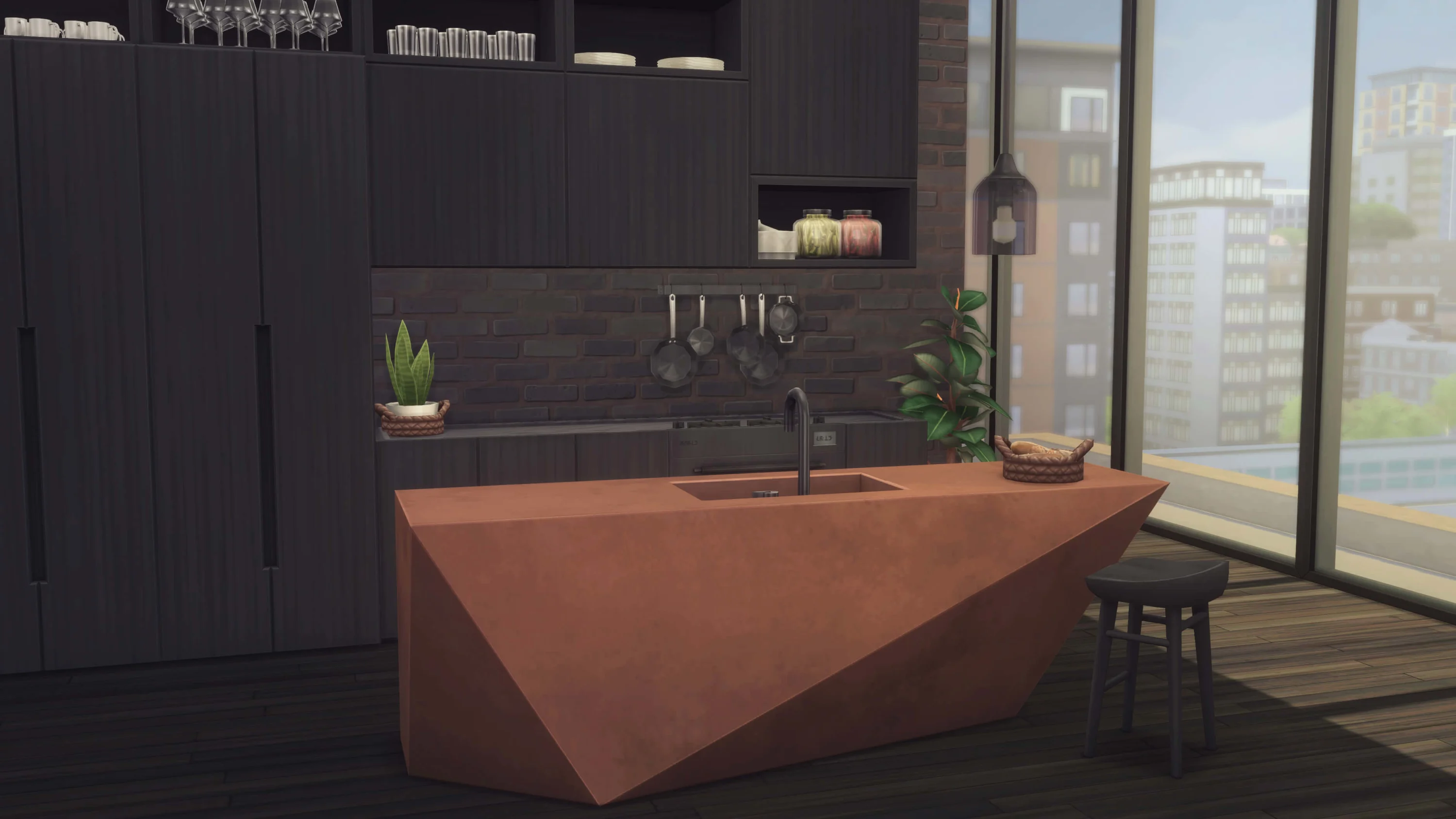
Essentially, just like a “Sims” kitchen, these two have modified their own lives to elevate their day-to-day and have more control over their careers. Sure, it’s tricky at parties when people ask what they do (“I was working for Givenchy before, and now I'm doing computer furniture,” laughs Felix) and it took their parents a while to get used to the idea. But for now, they’re doing what they love, making money and remaining firmly in the drivers’ seat with no boss, no manager and almost zero overheads. “What’s important to mention when I talk with people about this whole thing is, nothing of this was planned,” Felix says. “All of this just happened kind of naturally, and that everything fell into place at the right time. So I think this is why I feel like House of Harlix works well, because it’s a very natural thing. We just work on what we were given.”
Also, you can tell that they’re just great friends as well as pretty perfect collaborators. They finish each other’s sentences and smile when the other speaks. You can picture them slightly frazzled at 3 a.m. in Felix’s office, surrounded by empty coffee cups, glued to their screens and laughing at each other’s jokes. Like any good “Sims” player, they’ve created their own dream life, and they’re completely in control.

